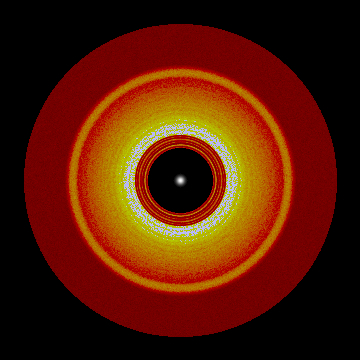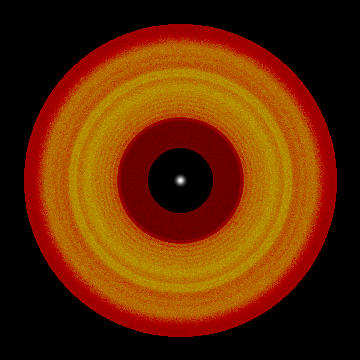






 |

 |

|

|
|
The image below shows a snapshot from a calculation of a planet-forming disk at a time of 300 Myr. The bright white dot at the center of the image is the star at the center of the disk. A real star would be 1000 or more times brighter than the star shown here. The inner edge of the disk in our calculations is 30 AU from the star; the outer edge is 150 AU from the star, where 1 AU is the mean distance between the Earth and the Sun. Planets grow from the collisions and mergers of small objects, planetesimals, in the disk. In our calculation, planetesimals range in size from 1 m across to 1-10 km across. As planets grow larger, their gravity stirs up the leftover planetesimals. These leftovers move faster and faster; their collisions produce dust instead of mergers. The dust spreads out along the orbit of the growing planet. |

|
Although growing planets are very dim relative to the central star, the dust is bright and observable from the Earth. Every newly-formed planet produces a bright ring of dust along its orbit. Some of the rings merge into a single large ring, as in the bright white ring in this image. The bright orange ring near the outer edge of the disk is from a single planet. Some of the images show dark gaps between the bright rings where the dust density is smaller. One of these gaps is visible as a black ring in the dark red inner part of the dark in the image above. The image below, at t = 2 Gyr in our calculation, shows several bright rings separated by dark red or black rings in the dust concentration. |
